Dopamine Decorating Starts with These Colorful Collectibles
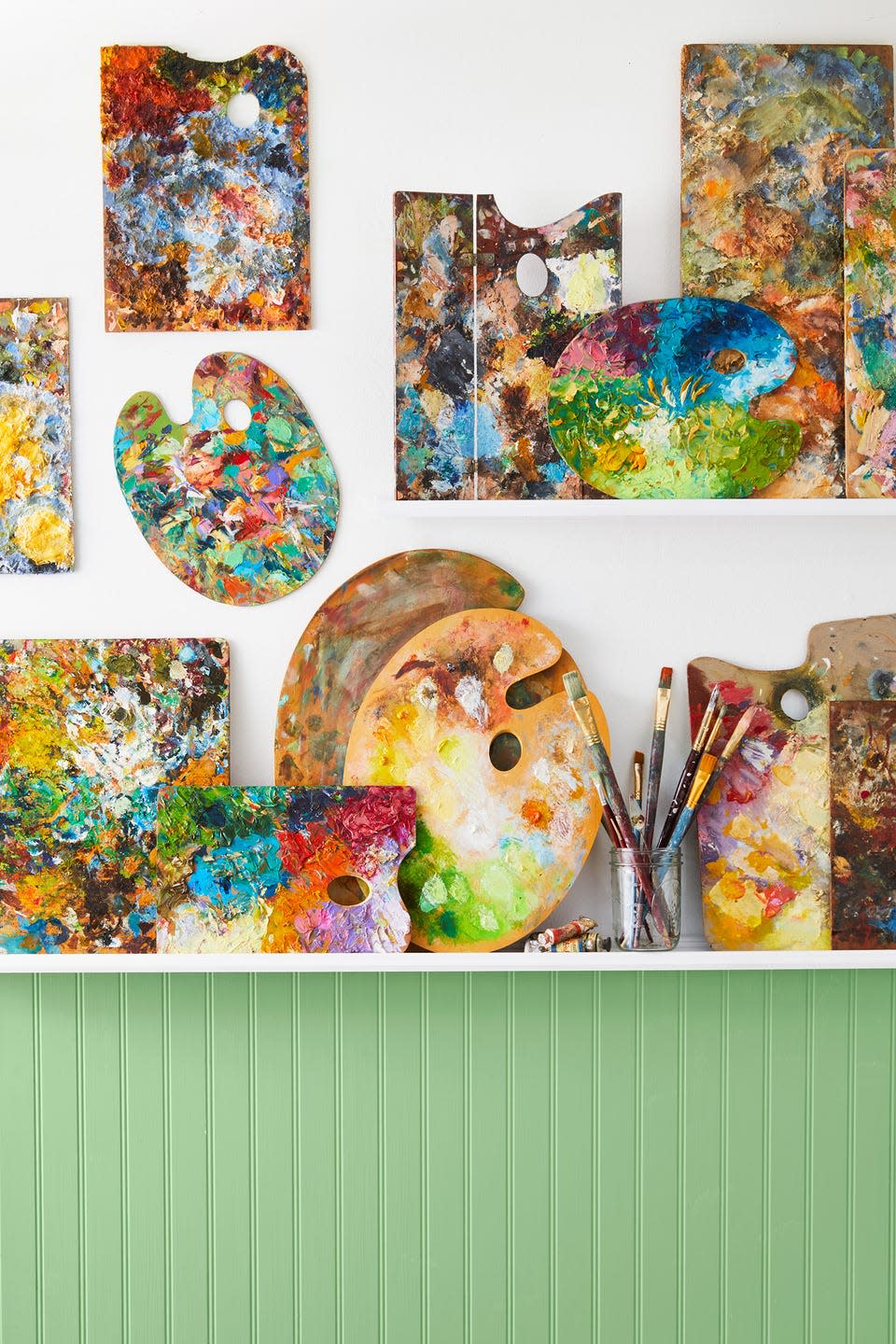
"Hearst Magazines and Yahoo may earn commission or revenue on some items through these links."
Sure, there’s something lovely about a warm shade of white, and blue-gray is the neutral we never knew we needed, but, every so often, a dopamine rush is just what the doctor ordered. And that’s precisely where these colorful collectibles come in! From paint-stained artists’ palettes to speckled kitchen bowls, these vibrant vintage pieces incorporate every stripe of the rainbow. The next time you hit an estate sale or antiques show or do a little late-night shopping on your favorite antiques websites, keep your eyes peeled for these bright finds in the midst of the rest of the ephemera.
For more ways to incorporate every shade into your home:
Thread Color Cards
Used to aid in ordering for both professional tailors and hobbyist sewers, thread color cards showcase samples with product names and numbers. Vintage versions also help tell the story of sewing’s evolution, such as Clark’s O.N.T. (“Our New Thread”) catalogs (shown center), which display a six-cord, soft-finished thread designed in the late 1880s for use in a new product: the at-home sewing machine.
What It’s Worth:
Today, collections of cards from the early 20th century can be stitched together for as little as $15 apiece.
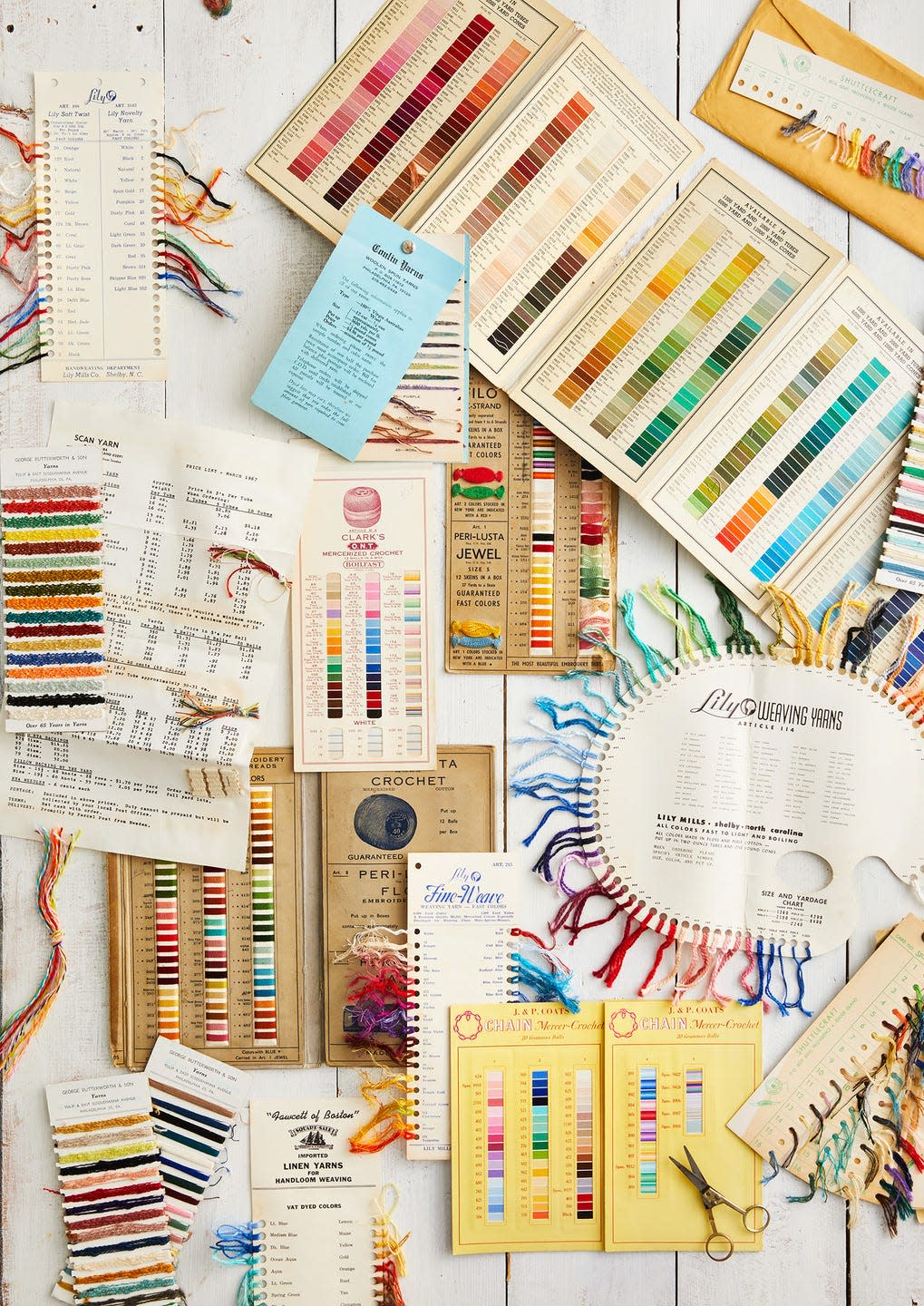
Dala Horses
Originating in the forest-filled province of Dalarna, Sweden, a region known for furniture making, Dala horses date back to the 17th century. (It’s believed they were carved from leftover wood scraps as toys for village children.) Over the decades, artisans began to paint the pieces—red being the most traditional color—and embellish them in a floral folk art style known as kurbits. Dala horses became known as symbols of Sweden after an exhibition at the 1939 World’s Fair in New York City.
What It’s Worth:
Today, prices range from $100 for horses created after 1950 to up to $1,000 for larger, century-old finds.
RELATED: Peek Inside a Family’s Colorful Home and Horse Farm
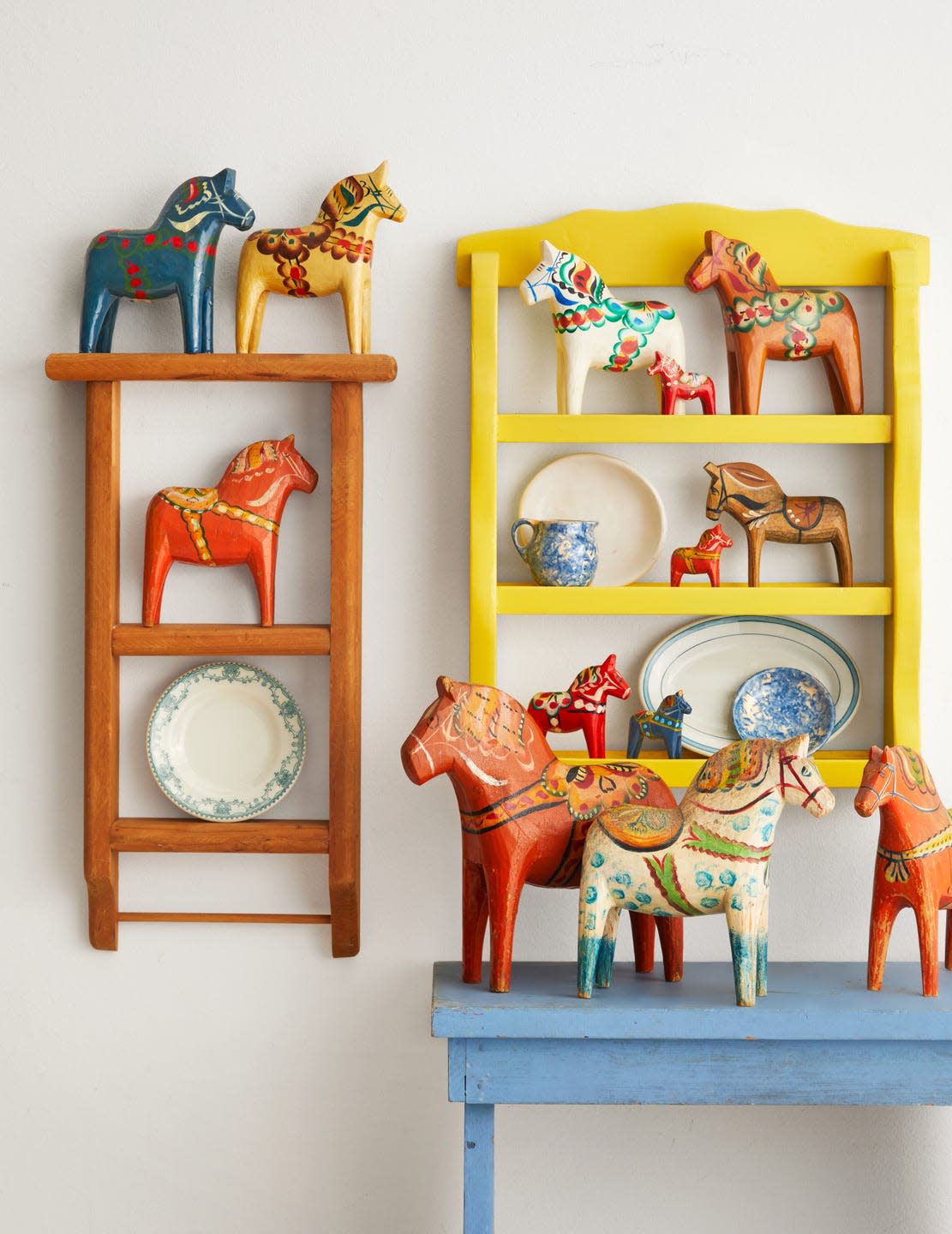
Field Notes: Behind the Art of the Color Chart
Ever wonder how the paint swatches at your local hardware store came to be so perfectly organized? Turns out, the system took centuries—and insight from doctors, naturalists, artists, and more—to develop, as anthropologist Anne Varichon explains in her new book, Color Charts: A History. Using nearly 200 charts spanning six centuries, the author traces the evolution of the logic and design behind color classification. (Many examples, including swatches of 19th-century silk ribbons, have never been published before!) Enthusiasts will also delight in naming systems from the 14th century, when shades were dubbed “lion fur” yellow and “donkey-back” gray.
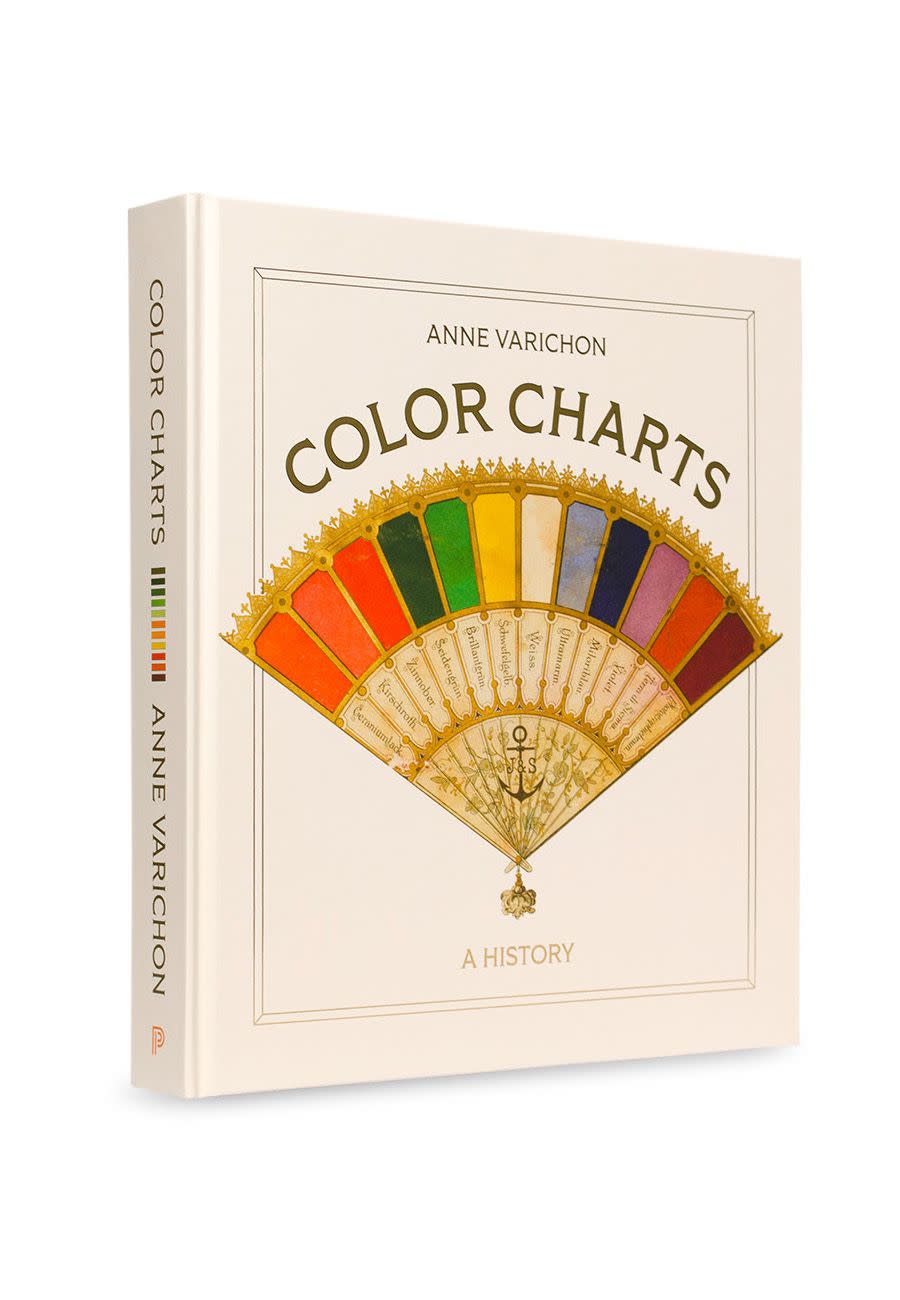
Painters’ Palettes
Sturdy in hand with a natural tone that shows colors as they’ll appear on canvas, wood has been the material of choice for oil painters’ palettes since the 1400s. (Tempered glass and ceramic are now preferred for watercolors and acrylics.)
What It’s Worth:
Palettes used in the 1950s through ’80s typically cost between $50 and $300, with prices increasing according to size and age. Pieces linked to well-known painters or art schools, however, can fetch much more—a palette used by Picasso sold for more than $70,000 at a 2020 auction!
RELATED: You Won’t Believe What These Antique Finds Are Worth!
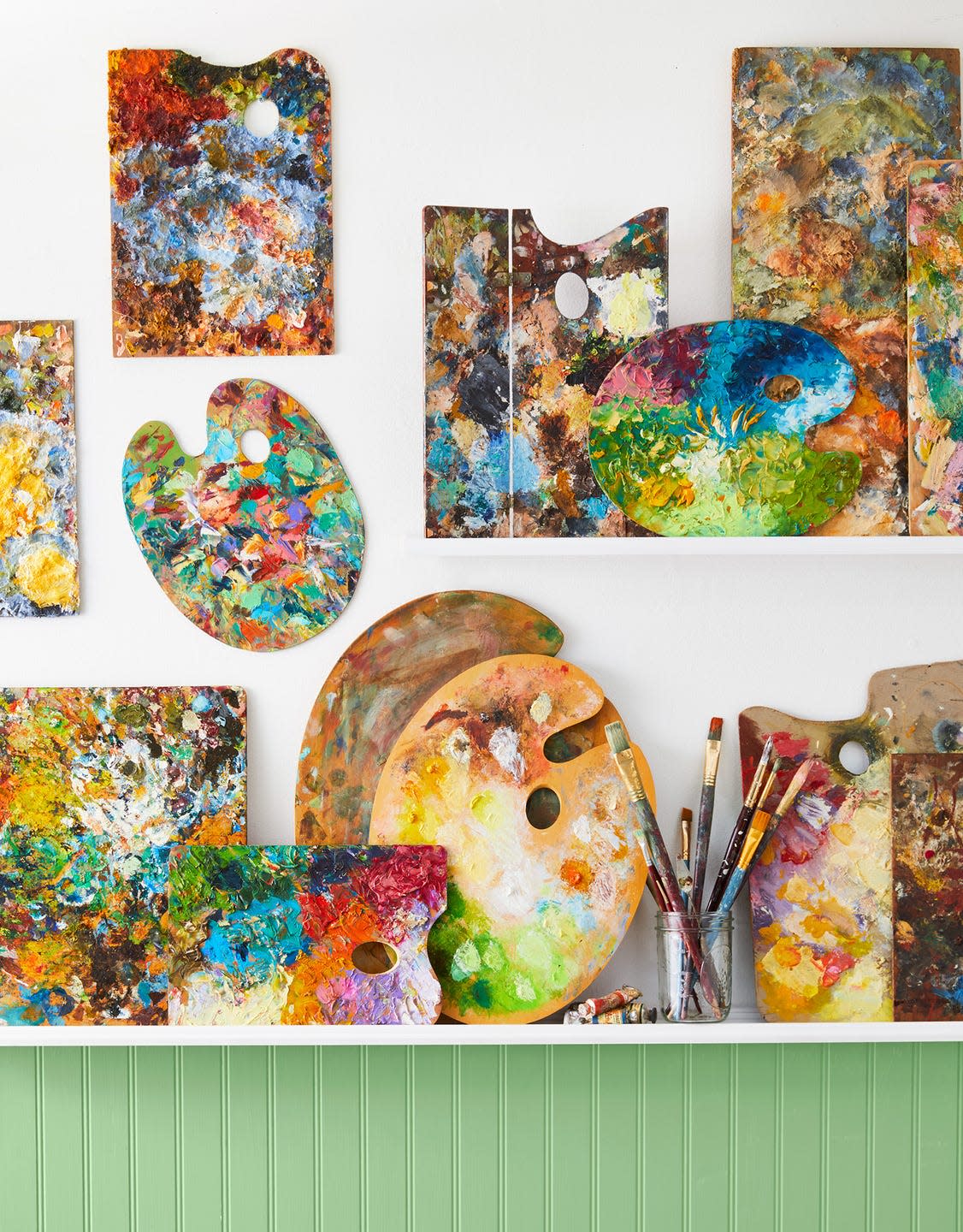
Educational Wooden Blocks
Designed to promote creative play, wooden blocks have been nursery school staples for centuries. For vintage versions that will look equally charming on a coffee table, search for parquetry sets created for schools by Illinois-based Developmental Learning Materials in the 1960s and ’70s (shown middle and right), which include geometric blocks used to re-create patterns shown on accompanying cards.
What It’s Worth:
Sets from Developmental Learning Materials typically start at $20. Antique sets from the first half of the 20th century (shown middle left) are often priced higher depending on condition and uniqueness of block design.
RELATED: The Collector’s Guide to Vintage School Supplies
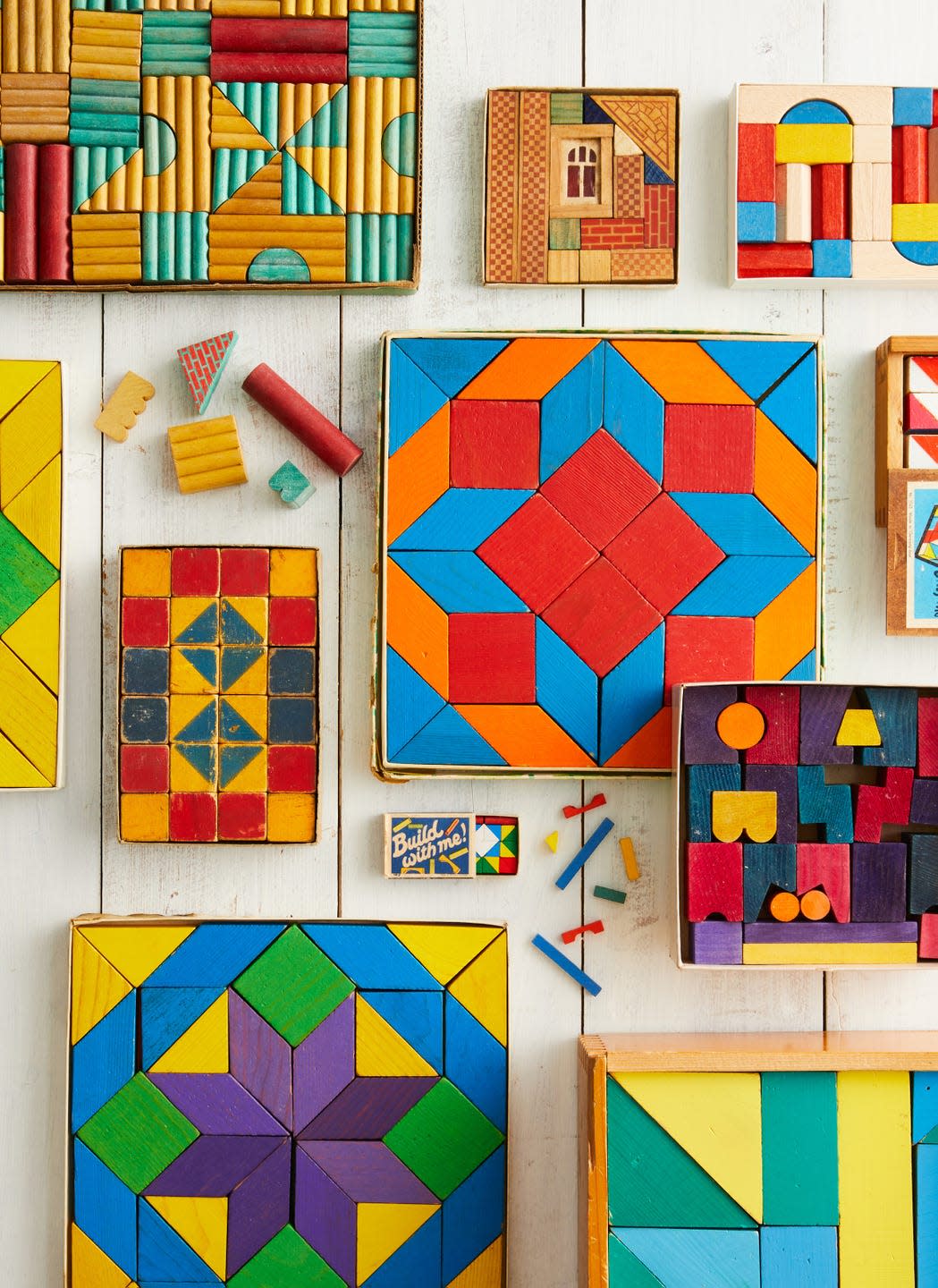
Texas Ware Bowls
As newly suburban families began entertaining outdoors, durable melamine (a type of resin) tableware became increasingly commonplace. In the late 1940s, Dallas-based Plastics Manufacturing Co. began churning out “Texas Ware” cups, plates, and more in the material, but its bestsellers were mixing bowls with confetti-like patterns created by adding melamine pellets to a heated mold. To verify authenticity, look on the bottom for a raised “Texas Ware” logo and a number that indicates size.
What It’s Worth:
Now beloved by collectors, vintage bowls from the 1950s on range from $40 to $100 depending on size and colorway. (Rarer blues and greens tend to fetch top dollar.)
RELATED: Don’t Pass Up These Vintage Kitchen Items at Estate Sales
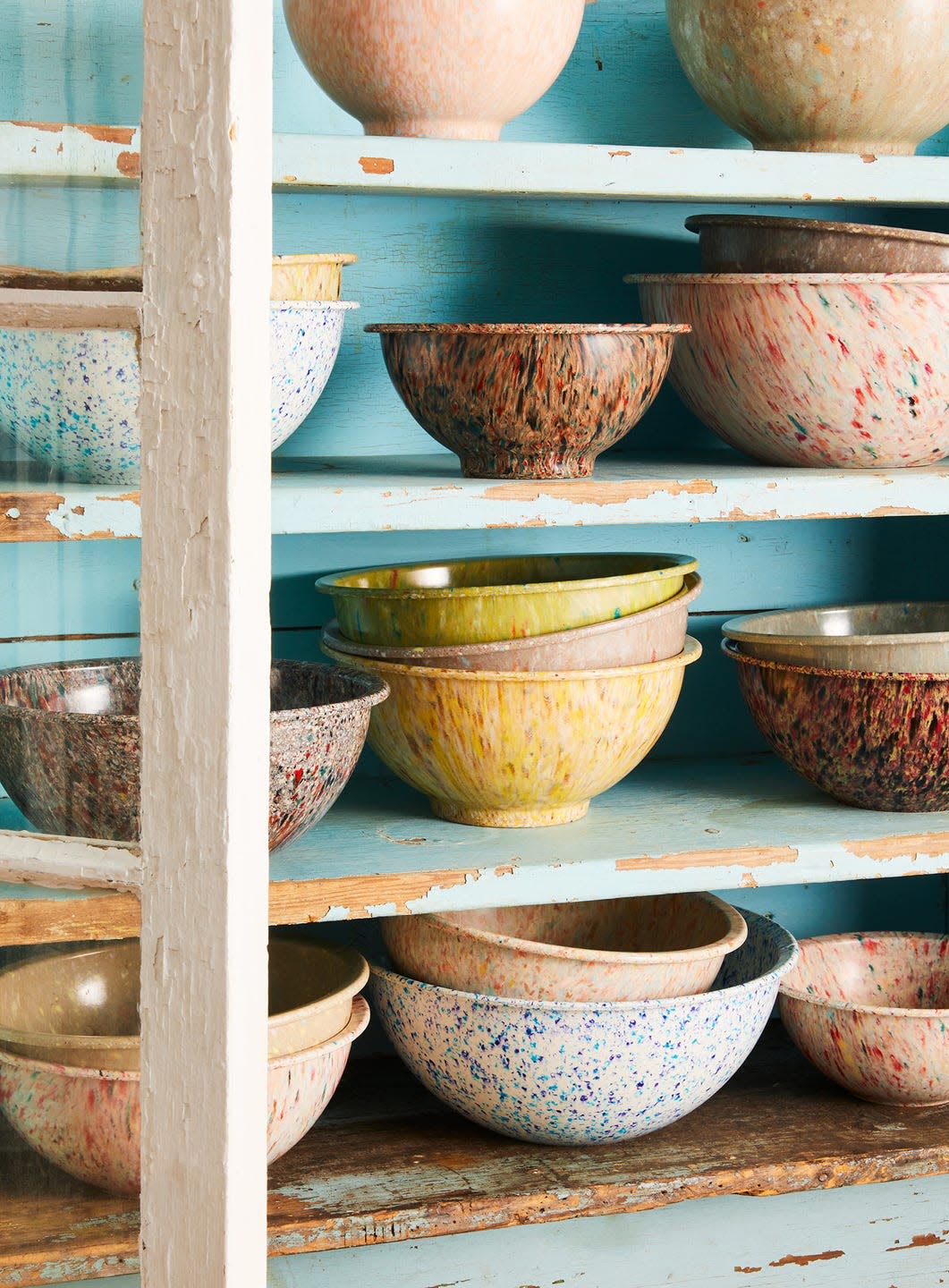
Start Collecting!
Paint palettes: Weston Table, Chez Pluie
Dala horses: Birger Sandzén Memorial Gallery
(some pictured are also courtesy of Inga Theissen and family)
Yarn and thread sample cards: Courtesy of Sue Hamilton
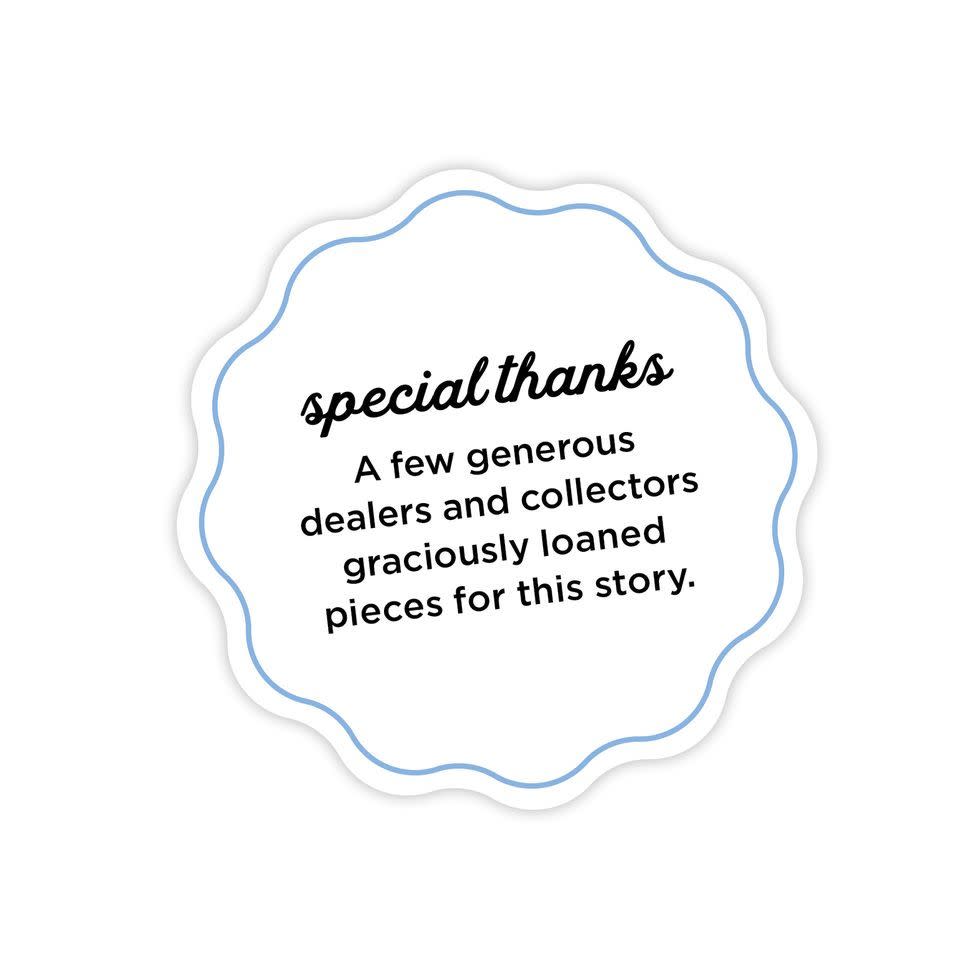
You Might Also Like
